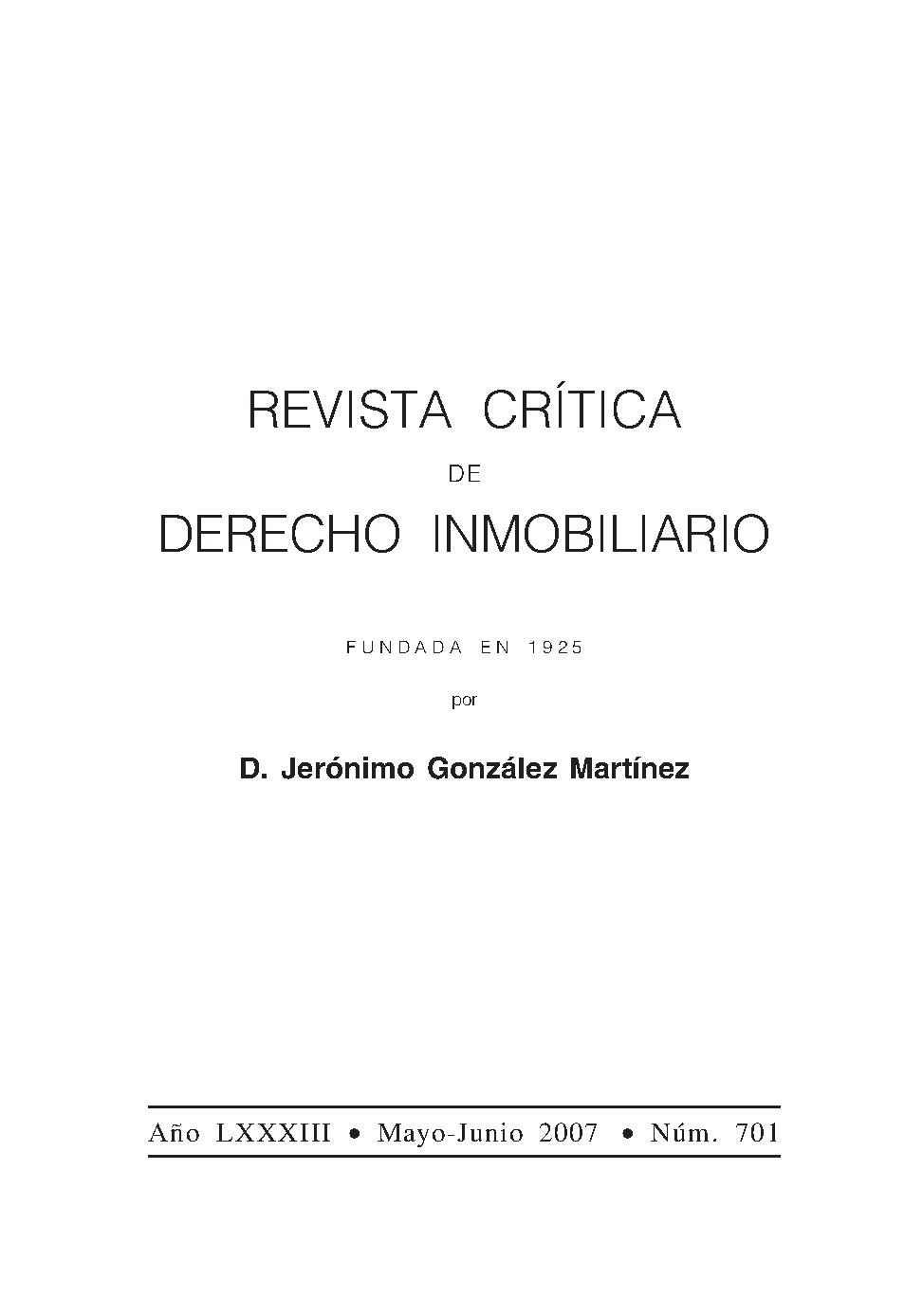LA PROPIEDAD INMOBILIARIA EN LA NUEVA LEY ESTATAL DE SUELO.
Keywords:
DEVELOPMENT, LAND ACTAbstract
The deliberate, explicit reformulation of the concept of real property by the new state Land Act of 2007, definitively passed by Congress in its plenary session of 10 May 2007, is based upon the premise that the rights and duties that are affected are not only those of the land owner. This basic premise is hinted at early in the Preamble (Preamble, I, paragraph 7). So, the rights of the land owner are not the only rights that count now. Inasmuch as land can be considered from various perspectives -for example, as an asset that can be transformed by means of an economic activity (which ties in with free enterprise), as the physical medium for a rural or urban «environment » (which ties in with the correlative rights to adequate enjoyment, pursuant to the land's nature and in congruence with the values specifically linked to each type), etc.- the constitutional right of ownership is not the only right affected. Also affected are those other rights that result from the shaping of an «environmental constitutional block» (Preamble, I, 3rd) to which state legislation must now attend in exercise of the power vested in it by the Spanish Constitution, article 149.1.1. Consequently, depending on the interlinked constitutional rights and duties in connection with land use and the legal system regulating land use in the broadest sense, three subjective statuses may be differentiated. These statuses are organised such that the first, which is the nucleus common to all three, is that which belongs to the citizen due merely to his or her citizenship; the second, which is concentric with the first, is the additional status held by the citizen who, in addition to being simply a citizen, holds the additional title of (possibly merely temporary) ability to act as an entrepreneur in the specific economic activity of transformation through urban development; and lastly, the third, also concentric with the first and with the second as well and thus absorbing them both, is the status inherent in the owner. Thus, the owner could potentially end up being the holder of all the rights and duties embedded in the resulting triple concentric circle. Nevertheless, in connection with this last observation, one thing should be pointed out: The new legal system makes its appearance imbued with a philosophy under which the action of transforming the land (the physical operations that we have hitherto considered traditional for the land we used to categorise as «unconsolidated urban» or «delimited developable», «sectorized developable» or «programmed developable», depending on the various terminologies in use today) is eminently public, an action whose title is public and whose responsibility is public (Preamble, III, 3rd). Hence it follows that there is no inherent land owner's right to develop. And therefore this right is «desegregated » from the bundle of faculties typical of the land owner, notwithstanding which the land owner may «reassume» the right to develop if that is the option exercised by the respective autonomous community's development law.









